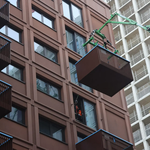steveintoronto
Superstar
Which severely undermines prior claims that Kingston's passengers would be inconvenienced by the Havelock route.The bulk of demand is through Kingston, not terminating there.
Which severely undermines prior claims that Kingston's passengers would be inconvenienced by the Havelock route.The bulk of demand is through Kingston, not terminating there.
What exactly would be the point? The bulk of demand is through Kingston, not terminating there. Also, a Kingston hub makes no sense given how unreliable VIA is (owing to CN). Connections would be brutal with VIA's current reliability and limited schedule. Far better to continue through and leave people on the train.
Exactly: Anytime (the equivalent to "Economy Plus" or "Business Plus" fares at VIA) fares and season pass prices (i.e. the prices which establish the maximum cost of commuting) are set by the regulator, not the franchisees. However, British voters have not exactly the best track record these days in identifying appropriate remedies to the problems it sees as most pressing...Have you seen the alternative modes of transport in the UK? There's a reason why rail there is growing faster. And it really doesn't have much to do with privatization. Indeed, privatization really hasn't brought the UK low fares. Compares fares in the UK to elsewhere in Europe. Still expensive.
Most telling to me is that people are now unhappy enough that nationalization is actually on the political agenda. That's incredible.
Well, Spain has the luxury of having its HSR trains completely on dedicated infrastructure, while Germany and Switzerland have 6 times more rail freight per capita and Austria even 10 times as much - both of which make train delays in Spain much less likely than elsewhere:The Spanish are less generous than the Germans despite having rock solid on-time performance:
https://www.renfe-sncf.com/rw-en/prepare-your-trip/after-travelling/Pages/compensation-policy.aspx
Trains 650/651/655 already operate between Kingston and Toronto exclusively and this is what happens whenever the fourth (!) car is unavailable:Your 2-car trainload assessment is right on in most respects. Kingston however has the potential to fill one or more of those cars on every train. The volume there is high, partly because it's a university and civil service town and partly because the service today is so damn good, with the combination of frequent departures, fast trip times, and distances that make for a tiring drive but expensive/unproductive air service. I do worry about whether that would be sustainable if Kingston loses the express component of its service.
There certainly is a reason why 30 trains stop in Kingston on an average weekday...I don't think that anyone is suggesting that passengers have to change trains, but rather that we should be looking at improving service to Kingston by starting/ending more trains there. And on that, I agree. Kingston is either the 4th or 5th busiest station on the network, after Toronto, Montreal and Ottawa. (Dorval has very similar ridership numbers, but I haven't seen the most recent ones yet so I don't know who's on top at this moment.)
Dan
Toronto, Ont.
Trains 650/651/655 already operate between Kingston and Toronto exclusively and this is what happens whenever the fourth (!) car is unavailable:
Tweet 1: "@VIA_Rail what's up with the shortened 651 train? One car short and people have to stand on the way in to TO."
Tweet 2: "@VIA_Rail 651 train absolutely needs another car on Monday mornings."
Tweet 3: "Hey Via, any news on where the fourth car went off 651 this morning? I know it's 70 yr old technology, but it was there last week"
Tweet 4: "@VIA_Rail Great stuffed Morning. End of long weekend and Via takes a car off 651. Make for a way too cozy trip. Just nutty planning!!"
Tweet 5: "@VIA_Rail please put an extra car on the 651 on a Monday morning. Tickets are sold out tomorrow and commuters need to be in work before 9am"
Unless I read the tweets incorrectly, they are referring to situations where the fourth car was unavailable - the allocation of fare classes can only be adjusted for bookings made AFTER the unplanned capacity reduction is known (and rail cars unfortunately don't give advance notice before they break down). Also, the Economy Plus fare poses the upper limit on the price for any Economy seat (just like it is the case with Anytime tickets in the UK). Finally, the price of the cheapest available ticket is not relevant to Commuter Pass holders (among which trains which arrive in cities like Toronto before 9am - like train 651 - are highly popular) and does therefore not affect their decision to travel on a certain train (provided that a seat is still available):This is where yield management and public policy need a tweak.
You can run a four-car train at a price point that assures that the train will be full but there will not be an x+1th customer. Or, you can run a six-car train and set your fares lower with the expectation that you will have empty seats in the short turn but the combination of more space plus lower fare will create demand and fill those empty seats as the business grows.
VIA is forced to the full-train scenario, by its fleet constraints. VIA doesn't have a fifth car to add to the train - it is lucky to find the fourth car. But the full-train experience is itself a demand killer. So, after a while the full four car train becomes less than full. And the yield management model says, raise the fares and make do with a three car train. The demand will correct itself.
Does this look like success?
- Paul
VIA Rail said:Each travel credit is valid for a one-way trip on any VIA Rail train* in Economy class in either direction between the two cities shown on the ePass or points in between.
http://www.viarail.ca/en/resources/conditions-commuter-passes
Unless I read the tweets incorrectly, they are referring to situations where the fourth car was unavailable - the allocation of fare classes can only be adjusted for bookings made AFTER the unplanned capacity reduction is known (and rail cars unfortunately don't give advance notice before they break down). Also, the Economy Plus fare poses the upper limit on the price for any Economy seat (just like it is the case with Anytime tickets in the UK). Finally, the price of the cheapest available ticket is not relevant to Commuter Pass holders (among which trains which arrive in cities like Toronto before 9am - like train 651 - are highly popular) and does therefore not affect their decision to travel on a certain train (provided that a seat is still available):
"Each travel credit is valid for a one-way trip on any VIA Rail train* in Economy class in either direction between the two cities shown on the ePass or points in between."
http://www.viarail.ca/en/resources/conditions-commuter-passes
In the rest of the country, being asked to pay a toll for a road leads to the response "omg we paid for it already". We throw hundreds of millions at saving suburban commuters minutes (Gardiner East). Manitoba should buy the damn railroad and the Feds pay for the train just as they do for White River and Jonquiere instead of downloading this onto low wealth low density communities. Then the Feds, province and those communities along the route can figure out how to create revenue opportunities for the public asset.
Omnitrax must repair Churchill rail line: Justin Trudeau
PM also announced $35M in federal funding for Diversity Gardens at Winnipeg's Assiniboine Park
I was thinking the same thing. The government should just take over the damn thing and fix it. But articles like this raising the idea of building a road illustrate just how messed up our society's priorities are when it comes to transportation. You have existing infrastructure that could be fixed for $60 million, but a lot of people would rather build a road. The road to Tuktoyaktuk cost $300 million and any road to Churchill would be significantly longer, so a road would probably cost ten times as much as fixing the rail line. The road would probably be unpaved, as is the existing Highway 280 past Thompson. So instead of a comfortable train ride you'd be faced with driving or taking a bus on 500+ km of gravel road - not a very inviting prospect. Plus a road would be no less prone to flood damage than the rail line and would cost just as much to maintain and operate.In the rest of the country, being asked to pay a toll for a road leads to the response "omg we paid for it already". We throw hundreds of millions at saving suburban commuters minutes (Gardiner East). Manitoba should buy the damn railroad and the Feds pay for the train just as they do for White River and Jonquiere instead of downloading this onto low wealth low density communities. Then the Feds, province and those communities along the route can figure out how to create revenue opportunities for the public asset.
The article also seems to show that the government can force the owner to fix it, which is good news. It should never have been privatized in the first place.




